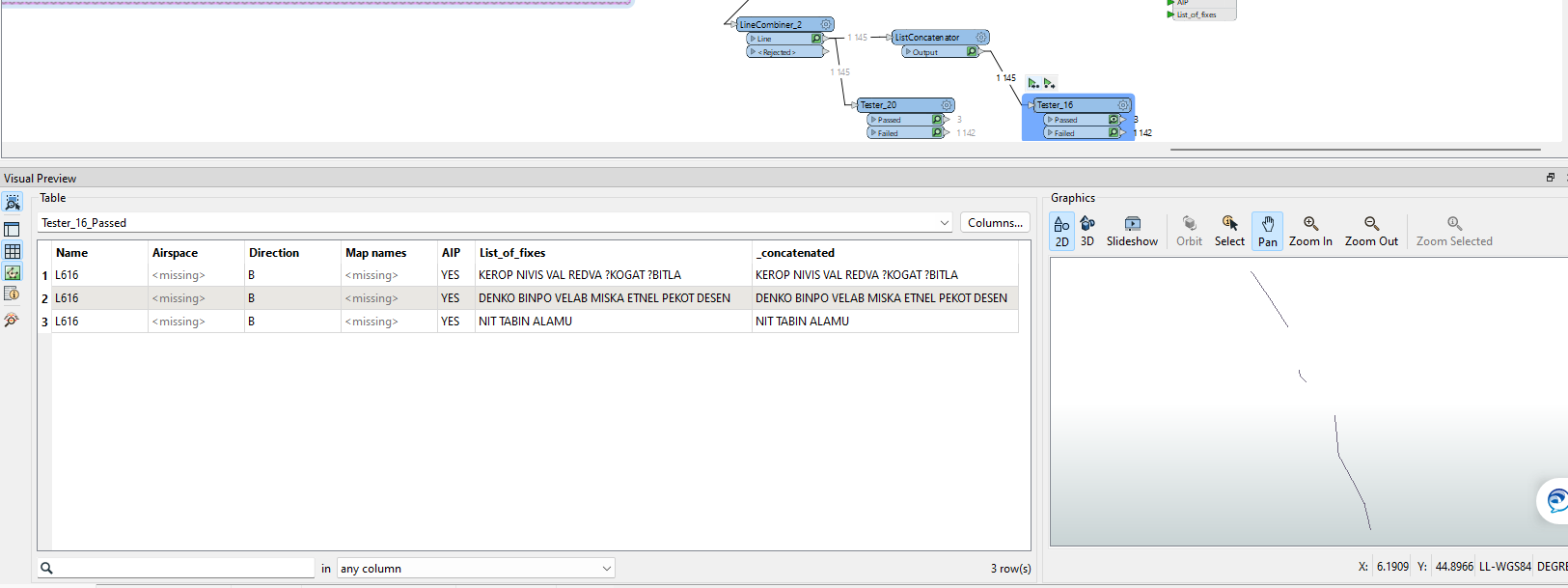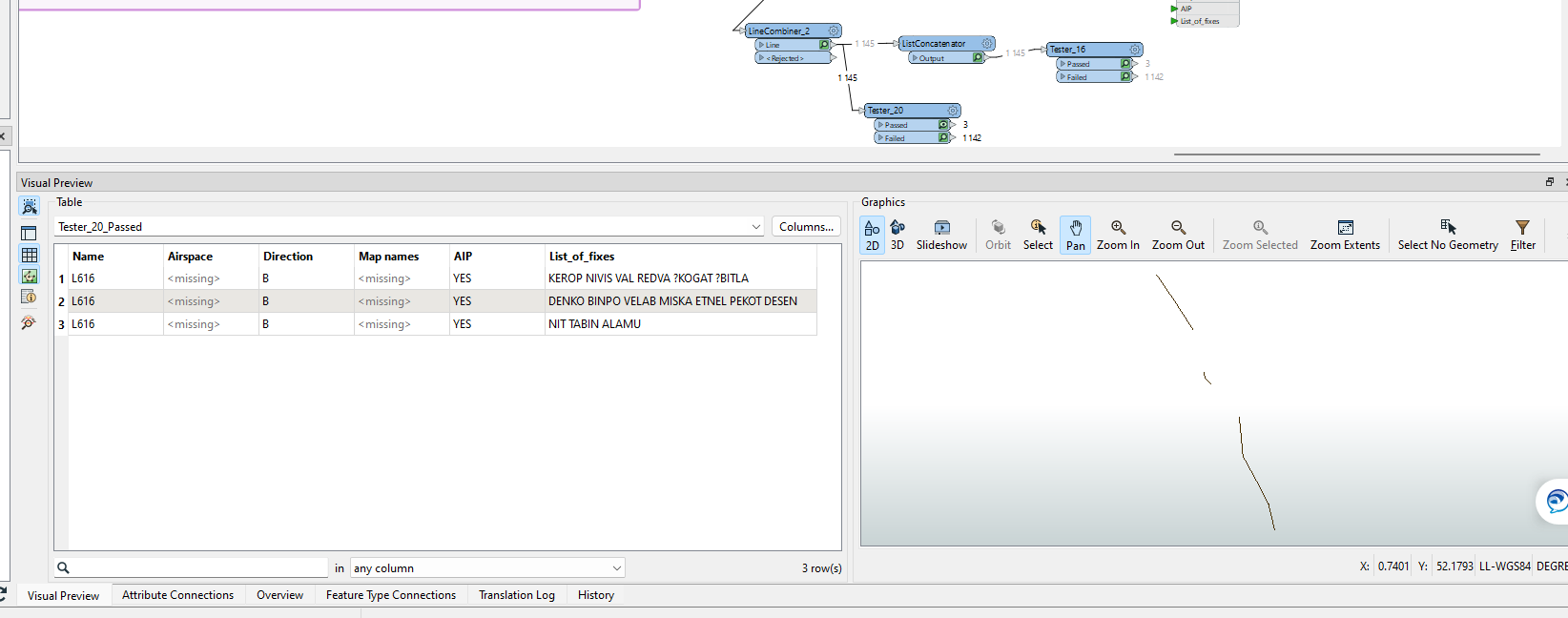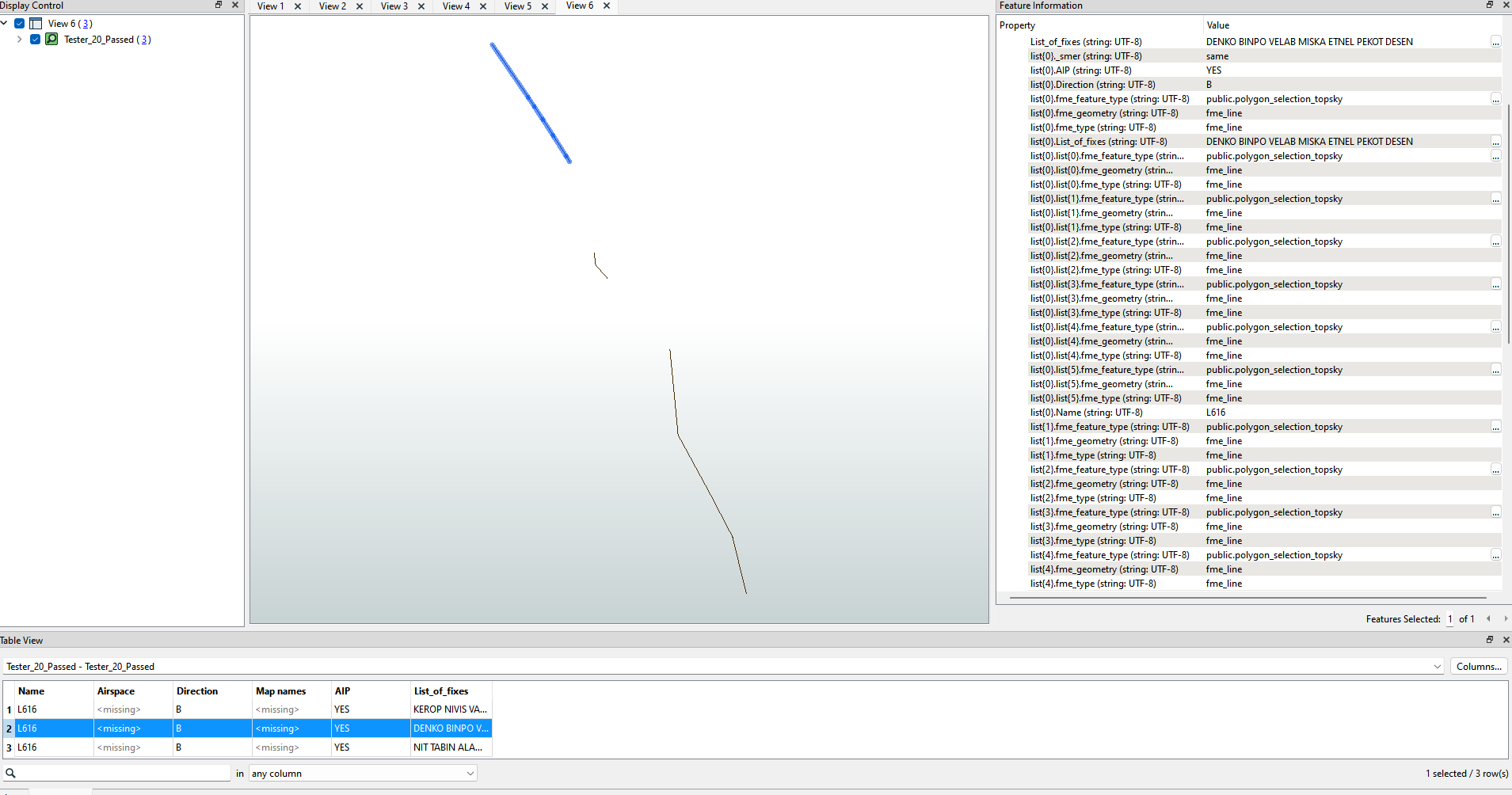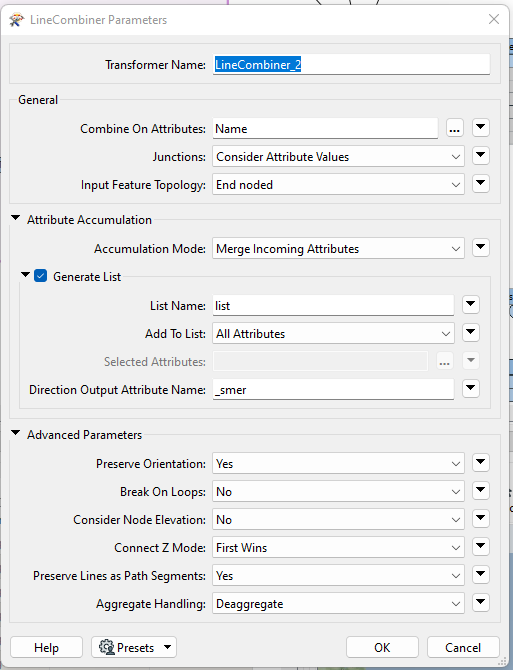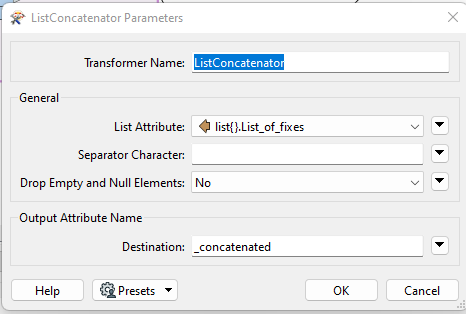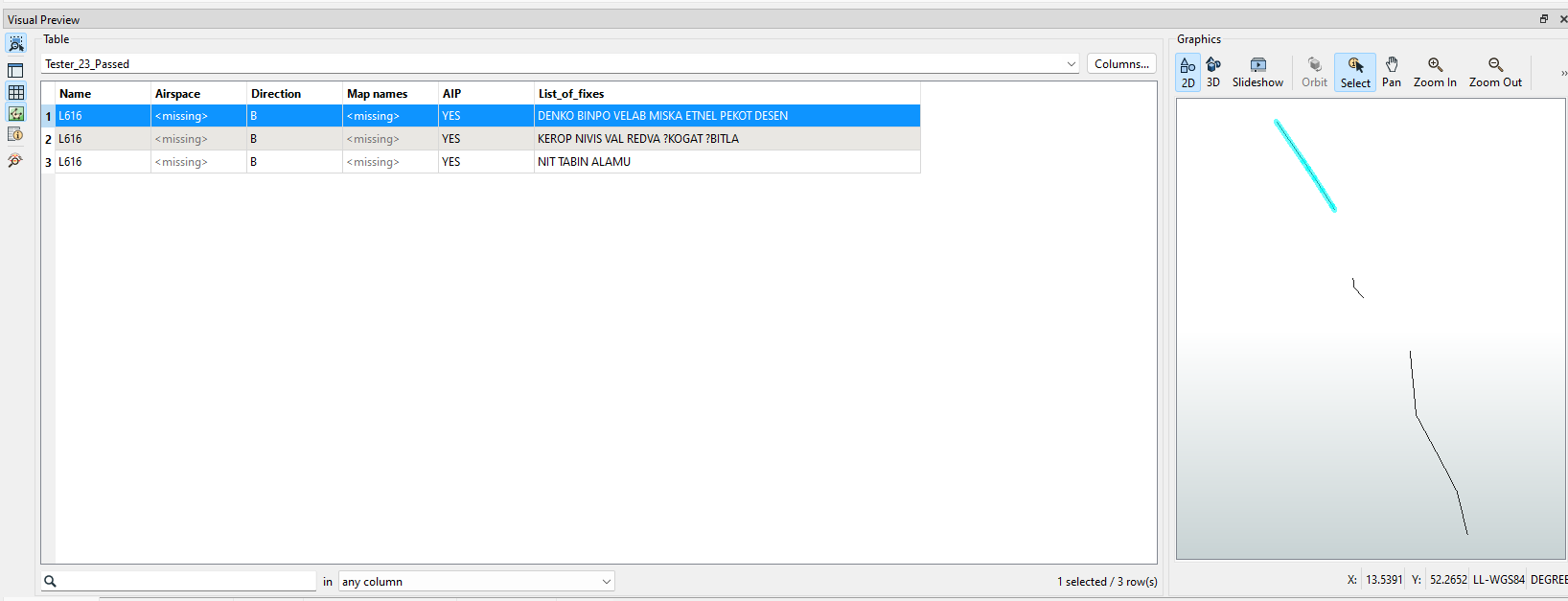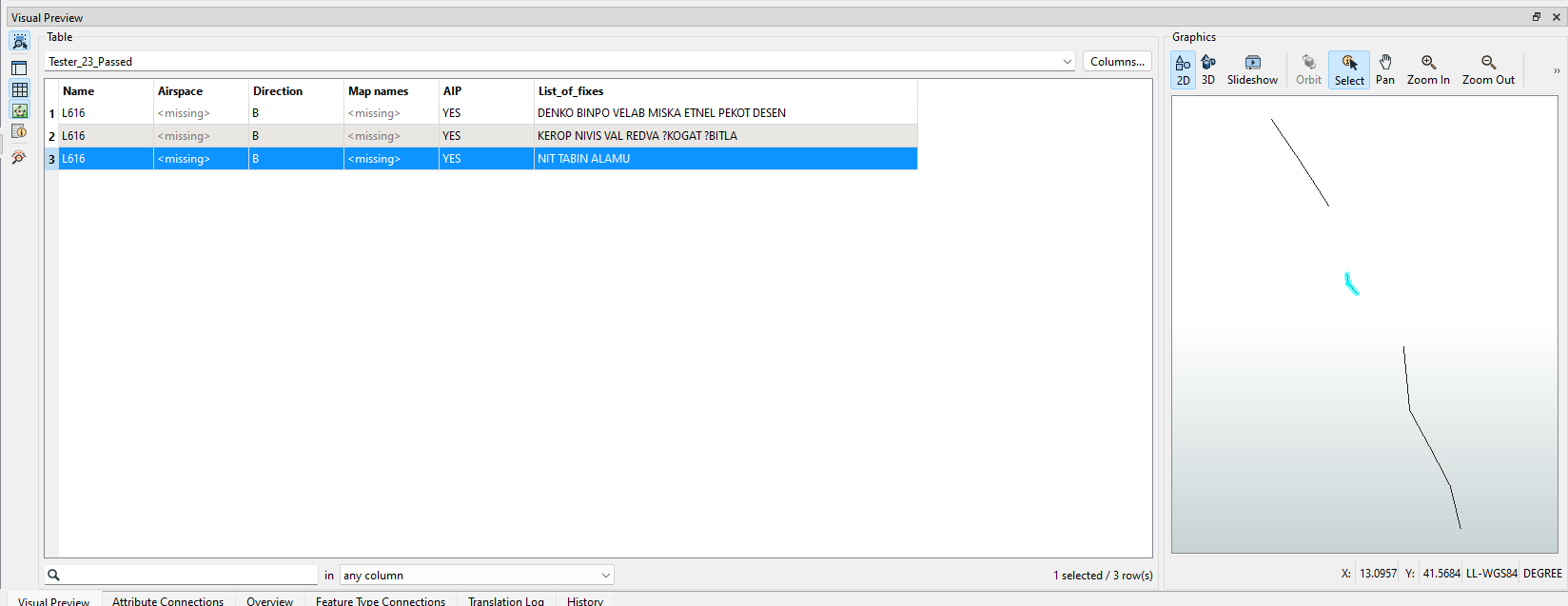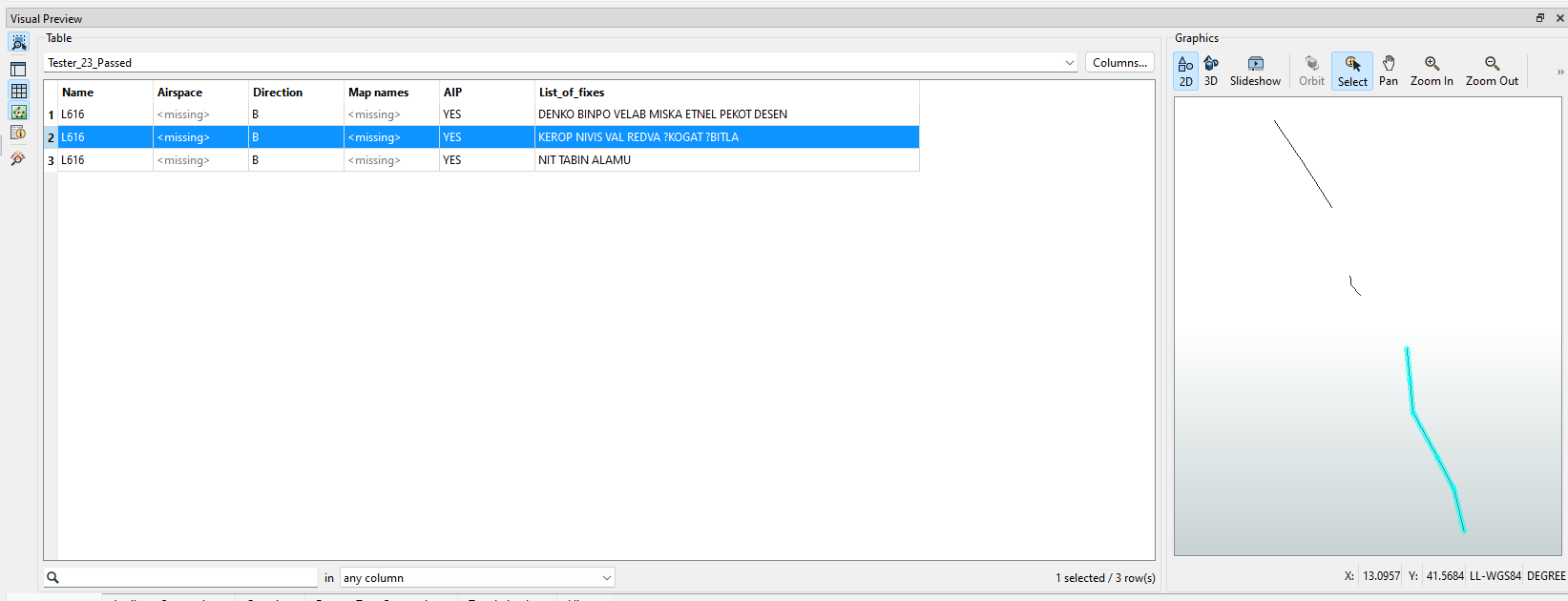Hello. Does anyone have knowledge of how to determine the sequential order of segments based on already created geometry? Or any other option? For example, I have L616 tracks where I need to combine the points in the list of fixes into one value. If I use the aggregator, I have values in one column, but the values are not consecutive, see the aggregator attachment - the aggregator writes segments - DENKO BINPO VELAB MISKA ETNEL PEKOT DESEN continues KEROP NIVIS VAL REDVA ?KOGAT ?BITLA and ends NIT TABIN ALAMU. It should be correctly DENKO BINPO VELAB MISHKA ETNEL PEKOT DESEN continues NIT TABIN ALAMU and ends KEROP NIVIS VAL REDVA ?KOGAT ?BITLA
Individual segments that have an expected trajectory from top to bottom are in the attachment.
Thank you very much







